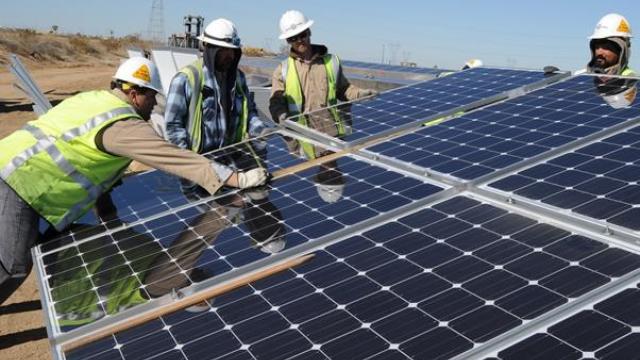What is Renewable Energy?
Renewable Energy is a form of energy that comes from natural resources and is rapidly renewed by natural processes. Learn more about renewable energy sources.
Wind Energy
Wind turbines (windmills) use strong, steady wind to create electricity. Wind power emits no pollution and has very little impact on the land. Wind energy can be produced anywhere the wind blows with consistent force.
Solar Power
Solar cells, which are made of silicon, convert the sun’s energy into DC, or direct current, electricity. The DC current is converted into AC, alternating current, providing a clean form of energy to power homes and businesses.
Hydropower
Dams provide electricity by channeling water down a chute and over a turbine linked to a generator. Hydropower is considered renewable as long as it has no adverse impact on water quality and on the wildlife habitat.
Geothermal Energy
Geothermal energy is generated by steam, which can be converted from hot water, found deep beneath the Earth's surface into electricity. Geothermal plants emit very little air pollution and have minimal impact on the environment.
Biomass
Organic matter, called biomass, is burned in an incinerator to produce energy. Biomass can also be converted into a combustible gas allowing for greater efficiency and cleaner performance.
Clean Energy Monitor
View real-time data related to LADWP's clean energy generation.

Children's Book – "Los Angeles Clean Energy Future"
"Los Angeles Clean Energy Future" provides information on how LADWP currently provides electricity to the City of Los Angeles and also summarizes ways that it plans to meet future energy needs by increasing its reliance on renewable energy sources and conservation. The content of the book is enhanced through colorful illustrations that will appeal to children and adults alike. This book also provides ways that children can help save energy.
